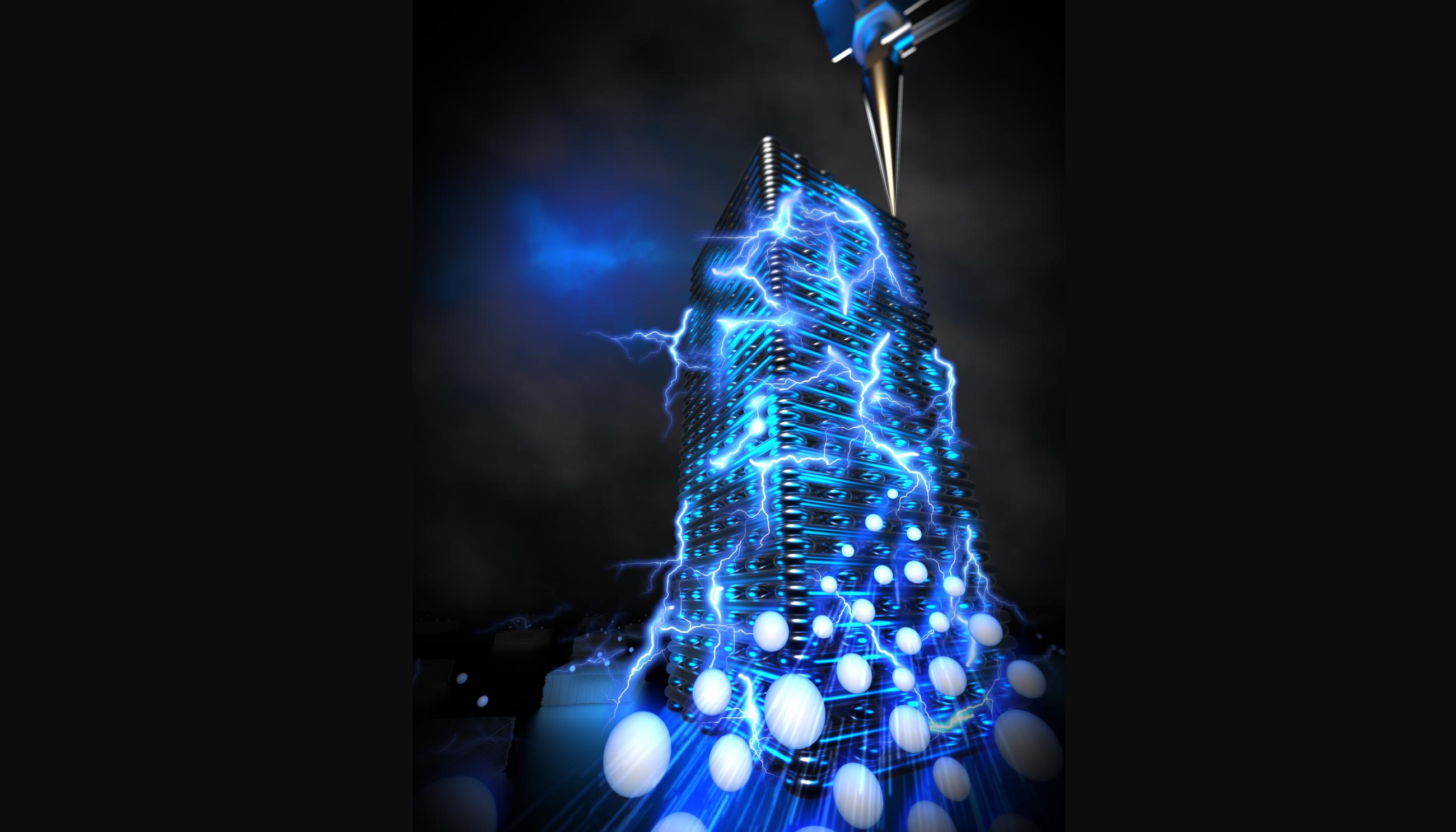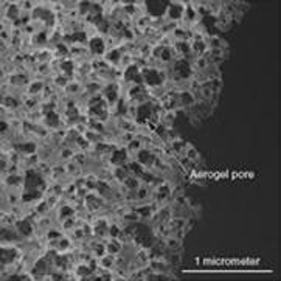Actuators convert an external electrical signal into a mechanical force by changing their dimensions. Well-known examples for such devices are piezoelectric actuators where the dimensional changes are caused by the polarization of the whole material. The effect is used in various industrial and scientific applications such as nanopositioning in semiconductor manufacturing, microfluidic motors and valves, etc. Another promising actuator concept relies on charge-induced changes of surface stress. This actuation concept requires the use of high-surface-area materials such as carbon nanotube based materials that have been extensively researched for this application, but that may prove to be too costly and to difficult to load in compression.
To make surface-stress-induced actuation a viable technology, one needs a material that, besides an extremely high surface area, is light-weight, mechanically robust, inexpensive, thermally stable, and environmentally friendly, ideally carbon based. Furthermore, inexpensive, large monolithic pieces should available. LLNL has developed such a material using its expertise in sol-gel chemistry and in making highly porous, low-density, lighter-than-air structures that are useful at LLNL in laser target fabrication, energetic composites, sensors, ceramics, and coatings. LLNL has a long history in tailoring the properties of these materials for different applications.
LLNL has developed novel nanoporous carbon materials for the surface-stress-induced actuator technology. The morphology of these materials has been designed to combine high surface area and mechanical strength. The process allows for the fabrication of large monolithic pieces with low densities and high structural integrity. One actuation technology relies on electrochemically- induced changes of the surface stress, another on surface-chemistry-induced changes in surface stress. The latter allows for a direct conversion of chemical energy into a mechanical response.
- Displacement responses similar or superior to piezoelectric actuators
- Lighter-weight material (low density of porous materials)
- Stronger material (supports high compressive and shear stresses)
- Inexpensive fabrication
- Environmentally friendly (the carbon-based material does not contain heavy metals)
- Low-voltage driving signal (electrochemical concept)
- The carbon based material is thermally stable (possible high temperature applications)
- Sensors
- Nanopositioning (XYZ stages, precision manufacturing machinery control, etc.)
- Microfluidic valving
- Medical devices (insulin pumps, stents, etc.)
- Artificial muscles
- Biomechanics (prosthetics, robotics)
- Antenna, seatbelt, and other mechanical deployment
Research is ongoing to fully characterize and further develop the materials for various applications. Current published research can be found in J. Biener, et. al. Nature Materials (2009) Surface chemistry driven actuation in nanoporous gold
Intellectual Property:
- U.S. Patent 8,785,346 "Method for Forming Gold-Containing Catalyst with Porous Structure"
- U.S. Patent 8,231,770 "Nanoporous Carbon Actuator and Methods of Use Thereof"
- U.S. Patent Application 2009/0101241 "Actuation via Surface Chemistry Induced Surface Stress"



